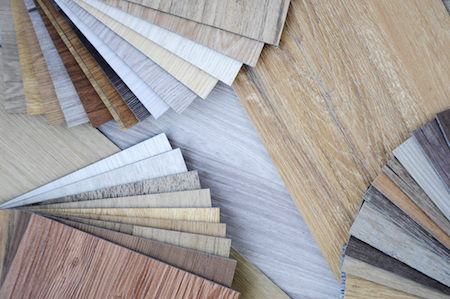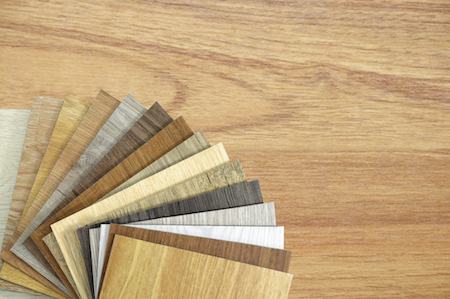Are Pets A Dealbreaker For Hardwood Flooring
We as Americans love our pets. According to a recent study by the American Pet Products Association, 67 percent of all Americans own a pet. And if you take a quick look around the Rocky Mountain region, you’ll find that Coloradoans take that to heart.
Walk anywhere in LoDo, and you’ll see dogs visit the street cafes as often as their humans. Hit the slopes, and you’ll find dogs often tag along. Even seeing cats out for a walk with their owners is now more commonplace than ever before.
Head indoors, and you’ll find even more pets, not just dogs and cats. Birds, rabbits, and other small animals often share living space with their human friends.
If you’re one of the 67 percent that has invited a pet to share your space, you already know you have to make certain adjustments to have a beautiful home and care for a pet at the same time.
Most interior designers will tell you pets and hardwood flooring don’t often go together. Pets impact hardwood floors in two ways – urine and scratches from toenails. Are they always a deal breaker with your hardwood floors?
Will dog claws scratch hardwood floors?
Dogs can be especially brutal to hardwood floors. Those sharp toenails dig in as they go around and around with a game of tag. Or maybe they can spend hours playing fetch with their favorite toys or a ball.
Dogs also weigh a lot more than cats or other small furry animals. When they jump, pounce, dance, and charge, they use all of the power in their front feet to gain traction. That means they dig those claws into your flooring just a little bit, looking for any way possible to go a bit faster.
But no matter how big your dog is, or how many games of chase they like to play, there are ways to counter the damage they can do to your hardwood floors.
Your first job is to realize your hardwood floors will need a little more protection than the average home. You’ll need to apply protective coatings to the finish, and perform maintenance more frequently to keep your floors looking their best. Does it take a little more bite out of your budget, and more time to ensure your flooring looks its best? Of course. But if you want a stylish home and a furry BFF too, it’s important to know what you’re in for before you have hardwood installed.
How to keep hardwood floor maintenance to a minimum
Before you head in and select the hardwood flooring perfect for your home, it’s important to have a better idea of the maintenance required to keep them looking their best no matter what your pet dishes out.
Use more protective coatings – Whenever you purchase hardwood flooring, it’s important to realize that each manufacturer and product is created with “average” in mind. Our goal is to point you to the material that will perform well under pressure, and hold up no matter what you and your family can dish out. But in the end, every product still can have a few boosters to give it even more strength.
Each layer of protective coating adds another layer to the surface. When pets nails hit the floor and scratch it, they are scratching the protective coating first, the hardwood next. With more protective layers, it takes longer for pet’s nails to penetrate into the flooring. That’s why adding several layers of protective coating in the beginning, may be your best solution.
Use a tougher coating – Of course, you can only apply so many protective layers to the hardwood before it becomes counterintuitive. Do a little research, and you’ll find that there are different brands and manufacturers that create top coats for various purposes. Find one that bonds better and creates a tougher shell for more protection.
Handling scratches as they appear – As surface scratches start to appear, you can use a stain-filler marker that matches the stain finish of your hardwood. This can keep your flooring looking as new as possible until the scratches start moving below the surface level, and actually into the hardwood itself.
Then it’s time to sand the surface, restain it to match the coloring of your floors, and reseal it with a polyurethane finish. Be sure to talk with one of our flooring consultants as you purchase your hardwood floors. We can provide you with tips on what colors to choose for your markers and stains, as well as provide you with top coat finishes to ensure they match your existing product as you refinish or replace small sections of your flooring.
Keep pet nails well groomed – It might be overstating the obvious, but pay attention to the condition of your pets’ paws. Wipe off their paws when they enter from outside to ensure sand and grit aren’t tracked onto your hardwood. Keep toenails clipped and short, building grooming sessions into your schedule every week.
Rugs are your best friends too – Hardwood and rugs just go together. Place rugs by every entrance to ensure your pets have a chance to wipe their paws before they step onto the hardwood. Use them in places your BFF might need a little more traction to help stay safe, like hallways or stairs. You can also place them in family rooms where your pets spend more time hanging out and playing with you.
Pet urine … the biggest problem
When you have pets, at some point in time, you will have accidents on your floor. And those small puddles of urine are the biggest potential problem that can impact hardwood flooring.
If you see your pet making a mess, and notice the puddle immediately, clean it up as fast as you can. Unfortunately, pets are notorious for sneaking and hiding their problems in far-off places. That means that puddle can sit for hours, possibly even days before it’s discovered.
As urine sits, it decomposes. It becomes more alkaline and more corrosive as it sits. If you’ve ever found old puddles to smell a bit like ammonia, there’s a reason for that. And ammonia and hardwood flooring don’t mix.
This happens even more frequently when the puddle is covered up. Has your pet found a favorite place to mark its territory, in the corner of a room, or on the side of a rug? It can keep the liquid from drying, making the corrosive properties even stronger.
If you suspect a puddle to have been there longer than a few hours, spot with a mild acid – vinegar should do the trick. Let the area dry completely, which could take several days to a week or more. You’ll also have to work on the pet’s behavior, because pets are notorious for returning to a spot once it’s marked.
If the stain is too deep, the only way to repair it is to sand it down, or to replace the boards altogether if they’ve warped.
Do pets and hardwood floors go together?
They aren’t always a deal breaker.
If you love your pets but are considering hardwood floors too, stop by today. We have a wealth of information we can share with you on how to bring the two together, and create a home you’ll love for years to come.
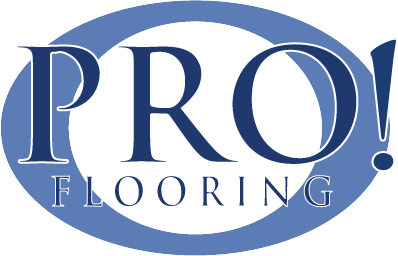
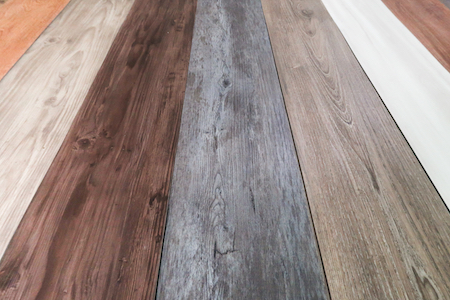 How vinyl floor is made
How vinyl floor is made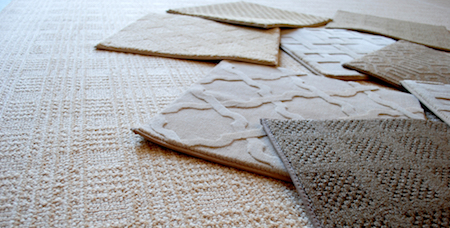 Carpet tiles are, as the name implies, squares of carpet that can be fit together inside your room. They usually are cut to 24 x 24 inches, or 18 x 18 inches square, but with their popularity, you’ll find them in all sorts of sizes.
Carpet tiles are, as the name implies, squares of carpet that can be fit together inside your room. They usually are cut to 24 x 24 inches, or 18 x 18 inches square, but with their popularity, you’ll find them in all sorts of sizes.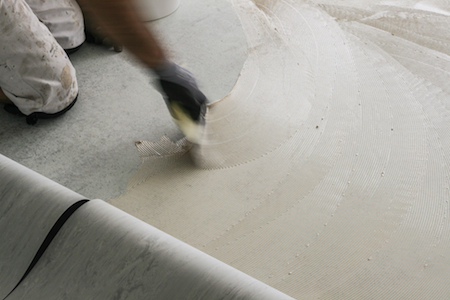 Floor adhesive is a strong, permanent glue that is used for attaching flooring materials to a subfloor or underlayment. Each type of flooring will have its own recommended adhesive, although you can find multi-purpose adhesives that do the job too. In order to find the right adhesive for the job, consider the following.
Floor adhesive is a strong, permanent glue that is used for attaching flooring materials to a subfloor or underlayment. Each type of flooring will have its own recommended adhesive, although you can find multi-purpose adhesives that do the job too. In order to find the right adhesive for the job, consider the following.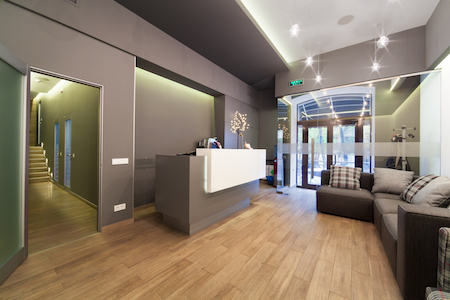 What makes laminate a popular choice for homes is also why property managers turn to
What makes laminate a popular choice for homes is also why property managers turn to  If you’re in the market to create a home where you can age in place, start at the bottom. Choosing residential flooring for aging in place doesn’t have to be complicated. The key is to shop with end results in mind, and be aware of these four things:
If you’re in the market to create a home where you can age in place, start at the bottom. Choosing residential flooring for aging in place doesn’t have to be complicated. The key is to shop with end results in mind, and be aware of these four things: